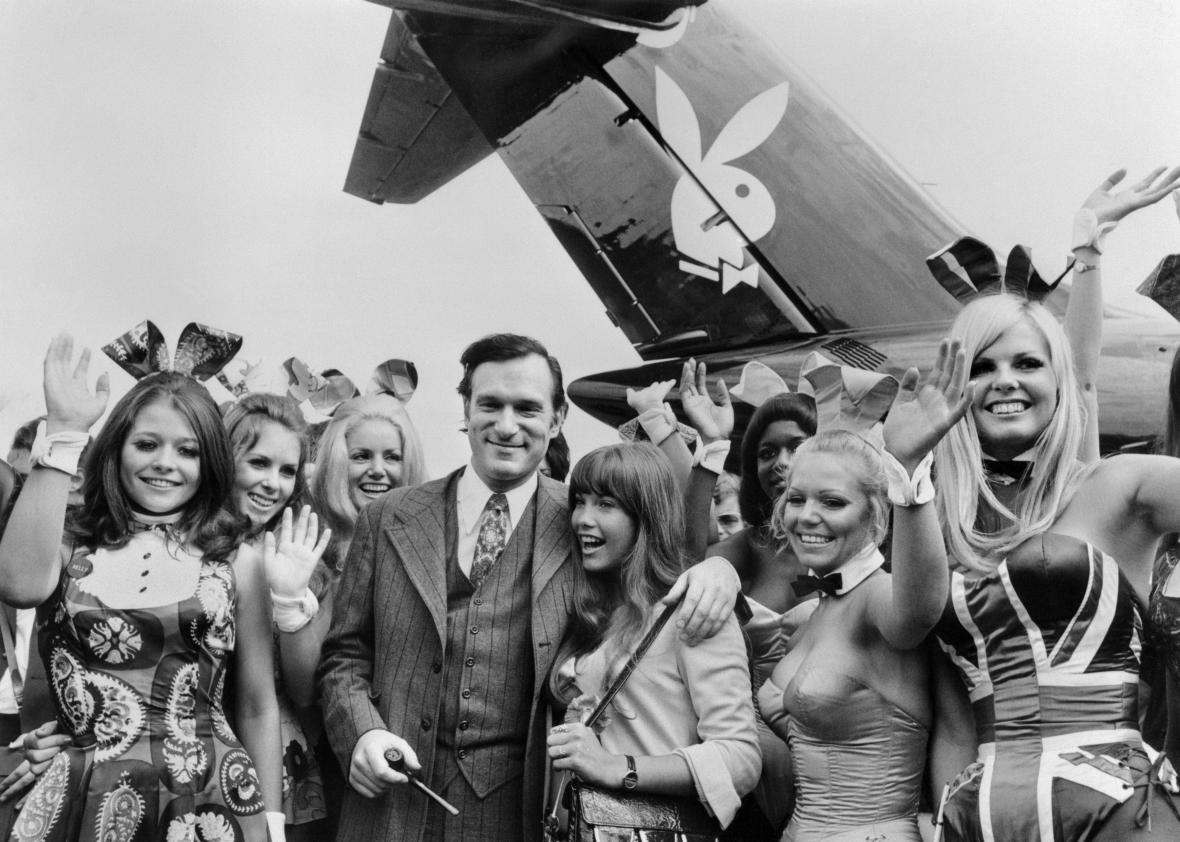Playboy founder Hugh Hefner has died at the age of 91, the New York Times reports. Hefner, who spun the sexual revolution into a media empire, died of natural causes at his Holmby Hills home, the Playboy Mansion.
Hefner, a native of Chicago, was only 27 when he published the first issue of Playboy in 1953, after a series of not-very-playboyish jobs that included working for Children’s Activities magazine and a stint in the human resources department at a cardboard box factory. The first issue, which featured a nude photograph of Marilyn Monroe—Hefner bought the rights for $500—was an immediate sensation. Hefner’s vision—a lifestyle based around highbrow culture, high-priced consumer goods, and high numbers of naked women—was clear from the first editorial:
We enjoy mixing up cocktails and an hors d’oeuvre or two, putting a little mood music on the phonograph, and inviting a female acquaintance for a quiet discussion on Picasso, Nietzsche, jazz, sex.
Hefner was also clear from the beginning about who Playboy was not for:
If you’re somebody’s sister, wife, or mother-in-law, and picked us up by mistake, please pass us along to the man in your life and get back to your Ladies’ Home Companion.
But Hefner’s magazine wasn’t something sisters, wives, or mothers-in-law could entirely ignore: In addition to its centerfolds, Playboy published serious fiction and landmark interviews—Alvin Toffler’s interview of Vladimir Nabokov is an all-timer—and the long-running joke about buying Playboy “for the articles” wasn’t entirely made up. As the magazine took off, Hefner became the ultimate practitioner of the lifestyle it promoted: After leaving his first wife and their two children in 1959, Hefner expanded into television, hosting Playboy’s Penthouse, a talk show in which he presided over an endless party on a set based on his Chicago apartment, with guests that ranged from Norman Mailer to Ella Fitzgerald. The image he cultivated on the show—a sophisticated bon vivant with an unembarrassed interest in women—became a permanent part of the cultural landscape, along with Hefner’s iconic pipe and smoking jacket.
By 1960, Playboy had a circulation of 1 million, and Hefner branched out again with the opening of the flagship Playboy Club in Chicago. The waitresses at Playboy Clubs—at their height, they could be found in most major American cities—were known as Playboy Bunnies, and were required to wear a uniform that included rabbit ears, a tuxedo collar, and teddies. Gloria Steinem, who worked undercover at a Playboy Club for an exposé in Show magazine, was not impressed, and neither were most people in the ascendant feminist movement. By 1970, Hefner, who was initially perplexed that feminists failed to embrace his message of sexual liberation, was writing internal memos declaring that “These chicks are our natural enemy.”
In 1974, Hefner relocated to Los Angeles, transforming his home there into the Playboy Mansion, a Xanadu-like pleasure palace, complete with a zoo and grotto. But by the 1980s, Playboy Enterprises, which Hefner took public in 1971, was in decline. Playboy Clubs closed, Playboy casinos were shut down, and Oui, Playboy Enterprises’ attempt to publish a magazine that could compete with the more explicit titles like Penthouse and Hustler that followed Playboy’s lead, was sold.
In 1989, Hefner did the unthinkable and married again, this time to Kimberly Conrad, a Playmate who was nearly four decades younger. By then, Hefner’s daughter Christie was running the Playboy empire. Hefner returned to the public eye in 2005—he and Conrad separated in 1998—in Girls Next Door, a reality show about his life in the Playboy mansion, where he juggled multiple girlfriends. In 2012, he married again, this time to Crystal Harris. He is survived by his wife and four children.
